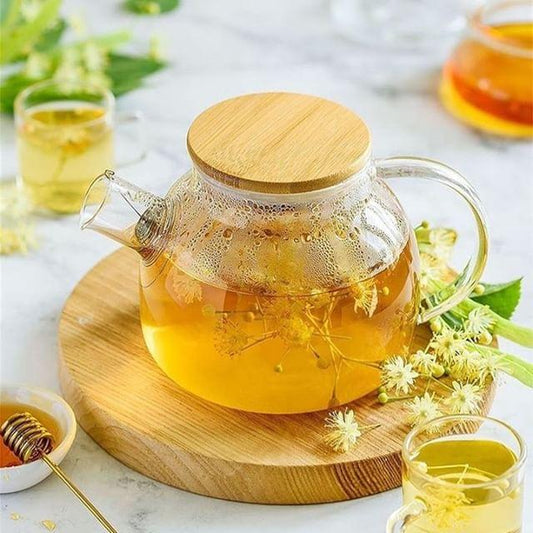Fermented Frenzy: Why Everything from Sourdough to Sauerkraut Is Back in Style

Health, heritage, and high-impact flavor have collided. From bakery loaves to backyard crocks, probiotic-leaning, tangy staples are rewriting how we eat—at home and on the pass.
By Staff • August 4, 2025
“Fermentation isn’t a fad; it’s a return to good sense—flavor that also does something for you.”
Why Fermentation, Why Now
The current fermentation boom sits at the crossroads of wellness, waste-savvy cooking, and a craving for food with a backstory. In the wake of home-baking surges and restaurant reinventions, fermentation offers exactly what modern diners want: distinctive character, digestibility many find gentler, and a direct line to culinary tradition. It’s comfort with edge—a grandmother’s crock meeting a chef’s tasting menu.
- Wellness appeal: Lactic-acid fermentation can yield organic acids and complex aromas that some associate with digestive balance.
- Nostalgia with utility: Preserving cabbage or starter isn’t just quaint—it’s practical, thrifty, and delicious.
- Social momentum: Sourdough crumb shots, kraut crocks, and kimchi day videos keep skills circulating and confidence high.
Tang & Umami: The Flavor Science
Most beloved ferments rely on lactic acid bacteria (LAB) or molds/yeasts that transform sugars into acids, alcohol, and aroma compounds. The result is a tightrope of brightness (acid) and depth (umami).
Perks up heaviness, sharpens fat, and lengthens finish. Think sauerkraut with pork, kimchi with rice bowls, kombucha with fried chicken.
A savory bassline from glutamates and nucleotides—why miso butter or gochujang vinaigrette tastes bigger than its parts.
The Restaurant Wave
Ferments are giving chefs modular tools: a spoon of miso to deepen sauces, a kimchi brine to spike a dressing, a slice of levain to upgrade a burger bun. They scale well, add signature identity, and reduce waste by transforming trim into condiments.
- Breads & buns: Naturally leavened loaves and potato-sourdough buns bring structure and sour complexity.
- Pickled sides: Quick dill cukes, curtido, and neon-pink onions lift rich plates and tacos.
- Condiments: Gochujang mayo, miso caramel, fermented chili oil—small additions, oversized personality.
- Low-waste systems: Cabbage cores, carrot tops, and grapefruit peels become brines, pastes, and shrubs.
The At-Home Revival
Fermentation scratches three modern itches: skill-building (there’s a craft to it), self-reliance (you made this), and routine (feeding a starter is oddly calming). The barrier to entry is low: a jar, salt, vegetables, time.
Start with vegetables (forgiving), then graduate to sourdough and soy ferments. Document your batches: date, salt %, ambient temp, taste notes.
3 Starter Projects (Step-by-Step)
1) Classic Sauerkraut (7–14 days)
Ratio: 2% salt by cabbage weight (e.g., 20 g salt per 1,000 g cabbage).
- Shred 1 medium green cabbage. Weigh it; multiply by 0.02 to get salt.
- Massage salt into cabbage until juicy. Pack tightly into a jar.
- Submerge solids under their own brine (use a weight). Seal with an airlock or loosely with a lid.
- Ferment at cool room temperature (18–22 °C). Burp if using a standard lid.
- Taste on day 4; continue until tangy (7–14 days). Refrigerate to slow fermentation.
Flavor ideas: Caraway, juniper, chili flakes, or a few shreds of beet for color.
2) Quick “Weeknight” Pickled Red Onions (not a live ferment)
Fast, bright, and perfect for tacos and grain bowls.
- Simmer 1 cup water + 1 cup vinegar + 1–2 tbsp sugar + 1 tsp salt.
- Slice 2 red onions thinly; pack into a jar with peppercorns or bay.
- Pour hot brine over. Cool, then refrigerate. Best after 2–24 hours.
Note: Technically a pickle, not LAB-fermented—great gateway to tangy flavors.
3) Sourdough Starter & Simple Country Loaf
Starter (5–7 days): Mix equal parts flour and water (by weight). Feed daily, discard half, and repeat until bubbly and doubling.
Basic dough: 75% hydration, 2% salt, 20% active starter. Autolyse, mix, fold over 2–3 hours, shape, proof, bake in a preheated Dutch oven (240 °C, covered 20 min, uncovered 20–25 min).
- Flavor control: Warmer proof = more lactic tang. Cooler, longer proof = deeper complexity.
- Crumb: Strong gluten development and gentle shaping preserve open structure.
Safety, Storage & Smell Checks
- Salt & submersion: Keep veggies under brine; surface mold/yeast can develop if exposed to air.
- Clean gear: Wash jars, knives, and hands; avoid reactive metals.
- Trust your senses: Pleasantly sour is good; fuzzy growth, rotten or sharp chemical odors are not—discard when in doubt.
- Cold storage: Refrigeration slows fermentation and stabilizes flavor.
Glossary of Ferments
Kimchi: Korean seasoned, fermented vegetables; spicy, savory, bright.
Sauerkraut: Cabbage + salt; tart, crunchy, versatile.
Miso: Fermented soy (sometimes rice/barley); paste for soups, marinades, and sweets.
Gochujang: Korean chili-rice-soy ferment; sweet heat and umami.
Kombucha: Sweet tea fermented with a SCOBY; tangy and sparkling.
Levain (Sourdough): Flour-water culture of wild yeasts/LAB for bread.
Key Takeaways
- Fermentation delivers big flavor and functional appeal in one move.
- Restaurants love ferments for signature condiments and waste reduction.
- At home, start simple: kraut, quick pickles, then sourdough.
- Mind the basics—salt %, submersion, clean tools, cold storage.
- Stir miso into butter for steaks and veg.
- Splash kraut brine into potato salad.
- Dot tacos with quick pickled onions.
Add a spoon of mature starter to pancake batter for tang and tenderness.
Save clean vegetable trimmings for vinegar shrubs and citrus peels for seasoning salts.
Frequently Asked Questions
Not always. Some ferments are kept live and refrigerated, while others are pasteurized or cooked, which can reduce or eliminate live cultures. Flavor and texture benefits remain.
A common range is 2–2.5% by weight of vegetables (20–25 g salt per 1,000 g veg). It supports LAB and discourages spoilage microbes.
In the fridge, many vegetable ferments remain enjoyable for months. Flavor intensifies over time; use clean utensils and keep solids submerged.
Yes. Time and temperature drive acidity: warmer/faster yields sharper tang; cooler/slower develops layered complexity. Move to cold storage when you like the taste.
- Spicy kimchi with apples for balance.
- Miso-maple glaze for salmon or squash.
- Leftover-bread kvass as a savory sip or soup base.
This article is for culinary inspiration and general information. For health concerns or dietary changes, consult a qualified professional.
Share:





